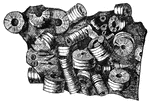
Tape-worm
Tape-worms live parasitically within other animals, and are often spoken of as Entozoa. This is a head…

Tape-worm
Tape-worms live parasitically within other animals, and are often spoken of as Entozoa. This is a single…
Tape-worm
Tape-worms live parasitically within other animals, and are often spoken of as Entozoa. This is a fragment…

Liver-fluke
Liver-flukes live parasitically within other animals, primarily birds and fishes. They are all more…

Hamster
Hamsters are rodents. They are adapted for rapid and continuous gnawing, and they live chiefly upon…
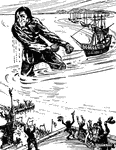
Gulliver in Victory
Gulliver takes the enemy's fleet, the Blefuscudians, and victoriously drags them into the royal port…

Evacuation of Corinth
Evacuation of Corinth, Mississippi- Confederate fortifications, from the northern angle, looking south-…

Battle of Pea Ridge
"Battle of Pea Ridge, Ark., fought March 6th, 7th and 8th, 1862, between the Federal forces, 13,000…
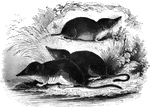
Shrews
"Is about the size of a rat.. Their legs are of equal length, and terminate into five toes, which are…

Zouaves
"Encampment of Colonel Ellsworth's New York Fire Zuoaves, on the heights opposite the Navy Yard, Washington,…

Bombardment of Fort Henry
"Bombardment of Fort Henry, Tennessee River, Tenn., by the Mississippi Flotilla, Flag Officer Foote,…

Fort Thompson
"Bombardment and capture of Fort Thompson, thirteen guns, near New Berne, on the Neuse River, by the…
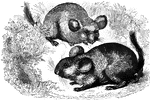
Chinchillas
"It is of a grayish color, and sufficiently long for spinning. The little animal which is produces it…

Confederate rams
"Confederate rams from Charleston Harbor attacking the Federal blockading squadron, January 31st, 1863.…
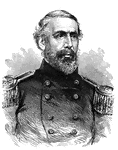
General J. H. Hobart Ward
"General Ward, born in New York city, June 17th, 1823, was educated at Trinity Collegiate School; enlisted…

Red River
"The war on the Red River. Admiral Porter's fleet passing through Colonel Bailey's Dam, above Alexandria,…
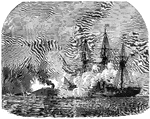
Mobile Harbor
"Farragut's naval victory in Mobile Harbor. The Hartford engaging the Confederate ram Tennessee.…
!["Assault of the Second Louisiana [African American] Regiment on the Confederate works at Fort Hudson, May 27th, 1863. The Battle of Fort Hudson was a severe and well-fought action. The Federal troops displayed their usual bravery, and were well handled by General Banks, driving the enemy to his second line of works. Of the [African American] regiments General Banks, in his official report, says: 'They answered every expectation. Their conduct was heroic. No troops could be more determined or more daring. They made during the day three charges upon the batteries of the enemy, suffering very heavy losses, and holding their position at nightfall with the other troops on the right of our line. The highest commendation is bestowed upon them by all officers in command on the right. Whatever doubt may have existed heretofore as to the efficiency of organizations of this character, the history of this day proves conclusively to those who were in a condition to observe the conduct of these regiments that the Government will find in this class of troops effective supporters and defenders. The severe test to which they were subjected, and the determined manner with which they encountered the enemy leave upon my mind no doubt of their ultimate success. They require only good officers, commands of limited numbers, and careful discipline to make them excellent soldiers.'"— Frank Leslie, 1896](https://etc.usf.edu/clipart/11800/11805/ft-hudson_11805_mth.gif)
Fort Hudson
"Assault of the Second Louisiana [African American] Regiment on the Confederate works at Fort Hudson,…
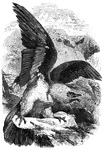
Lammergeyer
The lammergeyer (Swiss for "lamb-killer") is a member of the vulture family, but has a notably feathered…
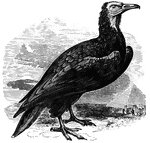
Egyptian Vulture
N. percnopterus, common to Africa, sometimes found in Southern Europe and in Asia. Males and…
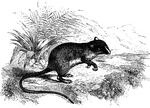
Gerbil
"They are somewhat rat-like in appearance, but are noted for the elegance of their forms, the length…

Free Mouse
Dendromys Typicus. "Size of the common mice, and are of a pearly-gray color, and have a black band running…
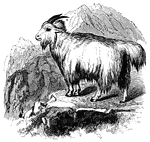
Rocky Mountain Goat
"Both male and female have small horns, and hair of a white color. They live in small flocks in the…
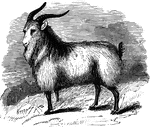
Common Goat
"They inhabit most of the world, and live in the scanty herbage of rocky places, where no other domestic…

Mouflon
"The animals of this genus are distinguished by short tails, rogh hair; and enormous horns; they live…

Meadow Pipit
Also known as the titlark, the meadow pipit prefers to live on steep and arid slops, subsisting on a…
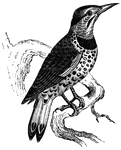
Golden-Winged Woodpecker
The golden-winged woodpecker is known for burrowing its own holes into live trees to use as a nest.
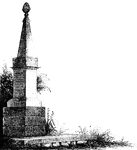
Goshen Monument
"Monument at Goshen. During the battle, Major Wood, of Goshen, made a masonic sign, by accident, which…

Surinam toad
"At the breeding season the back of the female exhbits a number of small pits; into these pits the male…
Shanny
"A very curious species, five sinches long, remarkable for creeping out of the water with their pectoral…

Van Wart's Monument
"Van Wart's monument. The following are the inscriptions upon this monument: North Side: 'Here repose…
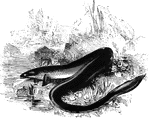
Common European Eel
"These have an elongated form, and a soft, thick, slimy skin; the scales are very minute, and imbedded…
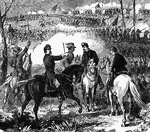
Battle of Pea Ridge
"Battle of Pea Ridge, Ark., fought March 6th, 7th and 8th, 1862, between the Federal forces, 13,000…

Battle of Pea Ridge
"Battle of Pea Ridge, Ark., fought March 6th, 7th and 8th, 1862, between the Federal forces, 13,000…
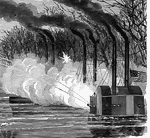
Bombardment of Fort Henry
"Bombardment of Fort Henry, Tennessee River, Tenn., by the Mississippi Flotilla, Flag Officer Foote,…

Bombardment of Fort Henry
"Bombardment of Fort Henry, Tennessee River, Tenn., by the Mississippi Flotilla, Flag Officer Foote,…
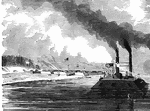
Bombardment of Fort Henry
"Bombardment of Fort Henry, Tennessee River, Tenn., by the Mississippi Flotilla, Flag Officer Foote,…
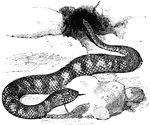
Acanthophis
"A genus of venomous serpents, they are of small size, live on dry land, and feed upon frogs, lizards,…
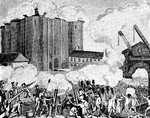
Bastile
"The taking of the Bastile, July 14, 1789. The Parisian mob, not satisfied with the formation of the…

Perch
"An embiotocoid fish, with small scales, uniserial and jaw teeth, and lip free and deeply cut along…

Tiger Beetle Larve
"The common European species, Cincindela campestris, may be found flying and running around…

Tiger Beetle and Larvae
"The common European species, Cincindela campestris, may be found flying and running around…
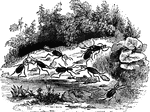
Bombadier Beetle
"The bombadier beetle has a large oval abdomen, which secretes a caustic fluid. They live in societies,…
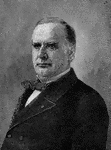
William McKinley
"In the general election of 1896, the principal question at issue was the financial policy of the country.…
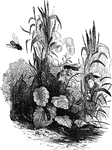
Honey Bee
"They are said to have originated in Greece, but have since spread all over the world; they live in…

Ants and Their Structures
"This tribe, which includes the various kinds of Ants, is composed entirely of insects which live in…

White Ants
"These animals, often called White Ants, live in vast communities, principally in the hotter…

Earwigs
"The Foficulina includes the Earwig, Forficula, which appears to live principally upon vegetable…
!["Like that animal [the mole] it is constantly engaged in burrowing in the earth; and to enable it to do this with facility iits anterior limbs are converted into a pair of flat, fossorial organs, which are turned outward in exactly the same manner as the hand of the mole. In its pasage through the earth it does great injury to the roots of plants, but it said to live quite as much upon animal as vegetable food." — Goodrich, 1859](https://etc.usf.edu/clipart/14900/14935/molecricket_14935_mth.gif)
Mole Cricket
"Like that animal [the mole] it is constantly engaged in burrowing in the earth; and to enable it to…
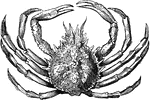
Spinous spider-crab
"In these the back is usually covered with spines and hairs. They generally live in deep water, and…

Common sea-cucumber
"Sea-Cucumbers are of various forms, some of the species being found in nearly all seas. They…
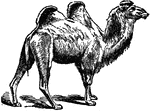
Camel
"Camel is a genus of ruminant quadrupeds, characterized by the absence of horns; a fissure in the upper…
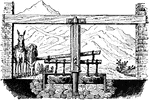
Arrastre
"Mexican Arrastre. A rude apparatus used in Mexico, and to some extent in the United States, for grinding…

Dugong
"The Dugong is an herbivorous mammal, belonging to the Manatees. It ranges from 10 to 20 feet in length.…

